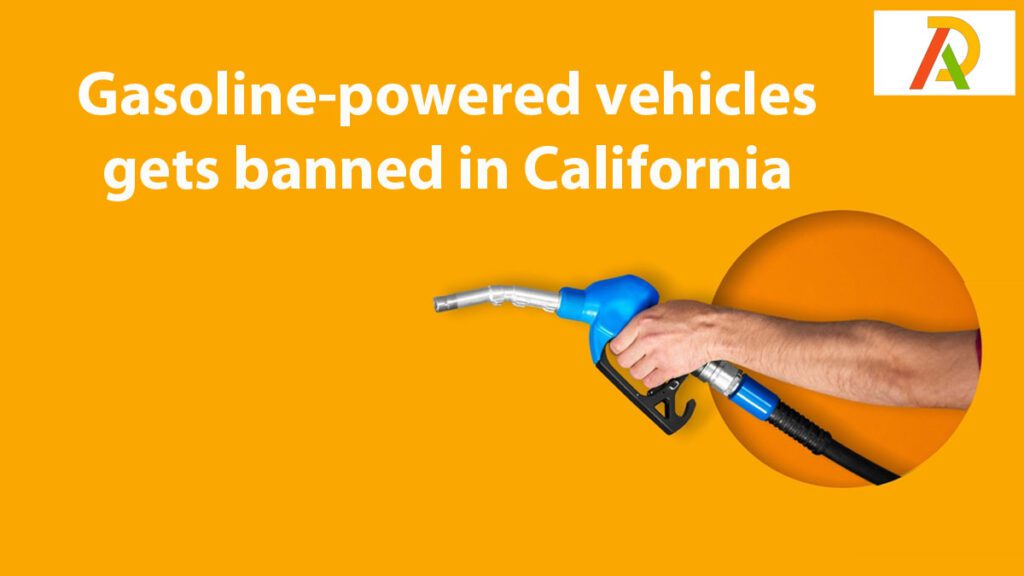Gasoline-Powered Vehicles Gets Banned in California

California has long been a leader in environmental policy, and its latest move is a ban on gasoline-powered vehicles. The state has set a goal of transitioning to all-electric vehicles by 2030, and this ban is a major step in achieving that goal. Many other states are sure to follow suit in the coming years.
What are the effects of this ban?
The gas-powered vehicle ban in California is a result of the state’s efforts to reduce air pollution and greenhouse gas emissions. The ban applies to all passenger cars and trucks registered in the state and will go into effect in 2040. This means that Californians will no longer be able to purchase or operate gas-powered vehicles and will need to switch to alternative fuel sources such as electric vehicles.
There are many potential benefits of this ban, including improved air quality, reduced traffic congestion, and lower emissions of greenhouse gases. However, some drawbacks should be considered. For example, electric vehicles can be more expensive to purchase and maintain than gas-powered vehicles, and the infrastructure for charging stations is not yet widespread. Additionally, some people may find it difficult to adjust to life without gas-powered vehicles after years of reliance on them.
Overall, the gas-powered vehicle ban in California is a bold step toward reducing the state’s environmental impact. It will take some time for residents to adjust, but the long-term benefits will likely be worth it.
How will this affect the economy?
The new ban on gasoline-powered vehicles in California will have a major impact on the economy. With so many people relying on cars to get around, switching to electric vehicles will cause some disruptions. But, in the long run, this could be good for the environment and the economy.
Electric vehicles are more efficient than gas-powered cars, so they use less energy and produce fewer emissions. This means switching to electric cars could help reduce California’s carbon footprint and improve air quality. Electric cars also tend to be cheaper to operate and maintain than gas-powered cars, so they could save drivers money in the long run.
The switch to electric cars will surely impact the economy, but it’s hard to say exactly how big those impacts will be. Some jobs will be lost in the oil and gas industry, but new jobs will be created in the manufacturing and maintenance of electric vehicles. It’s possible that, overall, the switch to electric cars could be good for the economy in the long run.
What are the alternative methods of transportation?
There are a few ways to get around California without relying on gasoline-powered vehicles. Public transportation, such as buses and trains, is still available in most parts of the state. Alternatively, you could use an electric vehicle or even a bicycle. If you’re willing to put in a little extra effort, you could even consider walking or running! Whatever method you choose, make sure to be safe and have fun.
How will this affect the environment?
The California Air Resources Board has voted to ban the sale of gasoline-powered cars in the state by 2040. This is a huge victory for the environment, as transportation is a major source of greenhouse gas emissions. Switching to electric vehicles will help California meet its climate goals and improve air quality.
There are still many questions about how this ban will be implemented, but it’s a big step in the right direction. Gasoline-powered vehicles are a major source of pollution, and this ban will help reduce emissions and improve air quality in California. It’s an exciting time for the state, and we can’t wait to see how this unfolds!
Conclusion
The California Air Resources Board has voted to ban the sale of new gasoline-powered cars in the state by 2035. This bold move signals the state’s commitment to reducing its carbon footprint and combating climate change. The ban will not only reduce emissions from vehicles, but it will also encourage people to switch to cleaner modes of transportation, such as electric cars. This is a significant step forward for California, and it sets an example for other states to follow.


